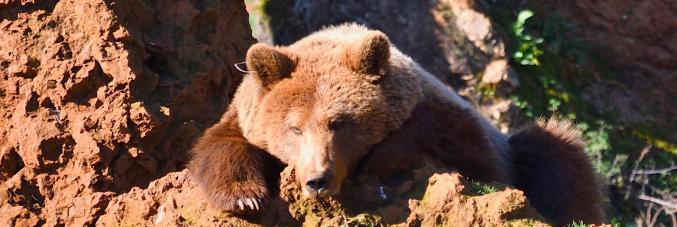
Hibernating bears do not develop muscle atrophy. A Unipd study reveals this
13.01.2025
'Reduced ATP turnover during hibernation in relaxed skeletal muscle' is the title of the study published in 'Nature Communications' by the research team led by Bert Blaauw, a lecturer at the Department of Biomedical Sciences at the University of Padua and Principal Investigator at the Istituto Veneto di Medicina Molecolare (VIMM) on the reduction of ATP myosin activity in resting skeletal muscle.
The study revealed a surprising phenomenon in brown bears during hibernation: despite a drastic reduction in activity, these animals do not develop the muscle atrophy typically associated with prolonged disuse. The research uncovered a key mechanism of this adaptation: the ATPase activity of myosin in resting skeletal muscle undergoes significant changes. This alteration in enzyme activity contributes substantially to energy conservation, allowing bears to preserve muscle mass during the long months of winter inactivity.
Analysis of individual muscle fibres taken from bears during both hibernation and summer revealed important changes during the wintering period. Fibres from hibernating bears show a slight decrease in force production, accompanied by a significant reduction in ATPase activity of resting myosin. Myosin, which acts as the molecular motor of skeletal muscle, therefore shows a marked decrease in its enzymatic activity when the muscle is dormant during hibernation. These results highlight a physiological adaptation that could contribute to energy conservation during overwintering.
'The results emerging from the study show that skeletal muscle limits energy loss by reducing myosin ATPase activity, indicating a possible role in multiple conditions of muscle atrophy,' Bert Blaauw points out. 'This research therefore opens up new therapeutic perspectives, suggesting potential strategies to counteract the loss of muscle mass and strength associated with periods of prolonged inactivity or the ageing process in humans. Findings on the adaptation mechanisms of hibernating bears could provide valuable insights into the development of interventions aimed at preserving muscle function under conditions of disuse or senescence'.
Proteomics conducted on individual fibres and immunohistochemical analyses revealed an important remodelling of the mitochondrial proteome during hibernation. Using bioinformatic and biochemical approaches, the researchers found that phosphorylated myosin light chain, a known stimulator of myosin ATPase activity in resting muscle, decreases in hibernating muscles. This discovery provides further details on the molecular mechanism underlying energy conservation and muscle preservation during winter inactivity in brown bears.
The study was funded by the STARS Grants programme for individual research at the University of Padua and AFM Telethon.



